On View
Discover the Eccentric Printmaking Genius of Hercules Segers at the Met
The forgotten Old Master captivates with his evocative landscapes.
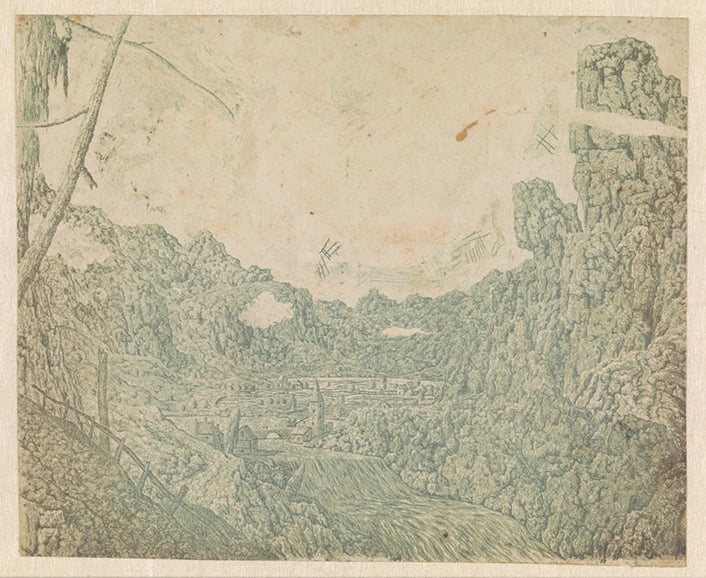
The forgotten Old Master captivates with his evocative landscapes.

Sarah Cascone

New York’s Metropolitan Museum of Art owns only one print by Hercules Segers (1589–1638), but that hasn’t stopped it from mounting an outstanding show of works by the somewhat-obscure Dutch painter, who has only 10 pieces in US museum collections and has never had a major show in the country before.
Segers’s name might not be familiar to most modern-day art lovers, especially in the US, but his groundbreaking printmaking techniques have served as inspiration to generations of artists, from renowned Old Masters like Rembrandt van Rijn—who actually owned one of Segers’s plates, reworking it to add his own figures to the landscape to create a collaborative composition, on view in the show—through to contemporary greats such as filmmaker Werner Herzog, as seen in the filmmaker’s contribution to the 2012 Whitney Biennial in New York.
“I only get two responses when I say his name. One of them is blank, the other is little twinkles in their eye—’I can’t believe you’re doing this show!’—and that’s mainly from artists,” said exhibition organizer Nadine Orenstein, the Met’s curator in charge of the department of drawings and prints, in a phone conversation with artnet News.
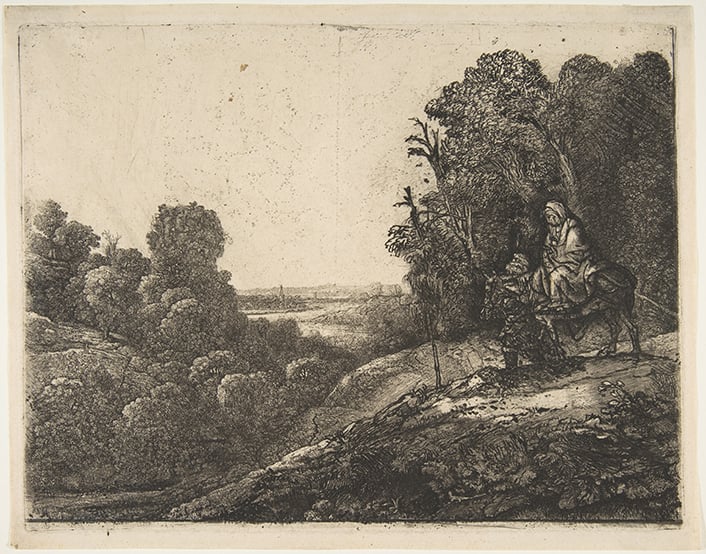
Rembrandt van Rijn and Hercules Segers, Flight into Egypt: Altered from Tobias and the Angel by Hercules Segers (circa 1653). Etching reworked with drypoint and burin by Rembrandt; sixth state of seven. In the Met Collection. Courtesy of the Metropolitan Museum of Art.
“If you’ve never seen his work in person, now is the time,” she added: “The colors were so off in previous publications. It just makes a real difference seeing these things in real life, at real size.”
Segers’s radical practice, which saw him transform a single image into dramatically different works art, was a rejection of the traditional notion that all prints from a single plate should look the same.
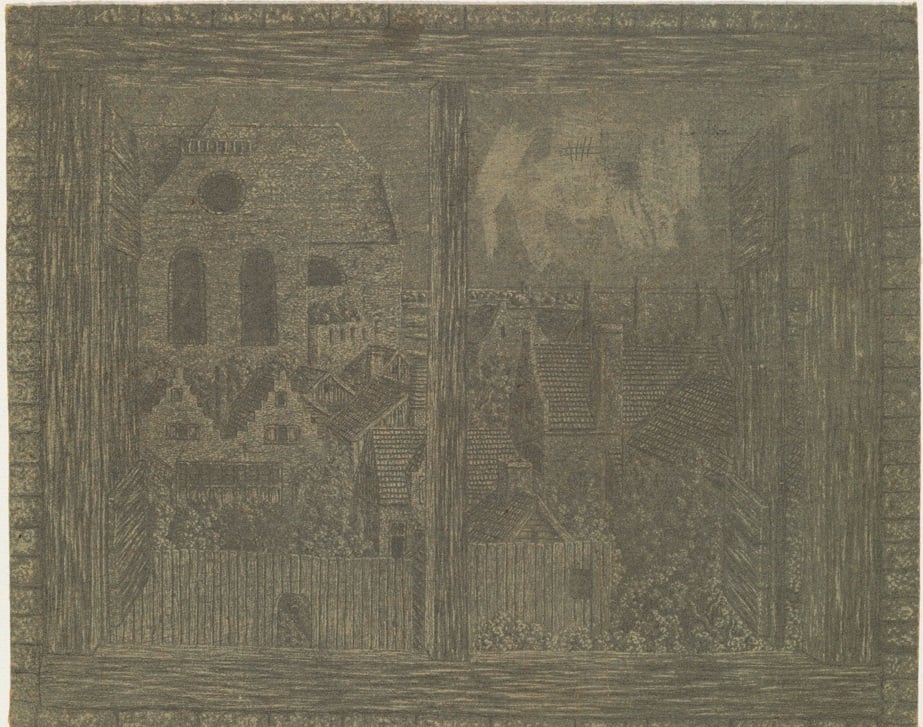
Hercules Segers, View through the Window of Segers’s House toward the Noorderkerk (circa 1625–30). Line etching; unique impression printed in black. On loan from the Rijksmuseum, Amsterdam. Courtesy of the Metropolitan Museum of Art.
The exhibition title, “The Mysterious Landscapes of Hercules Segers,” comes from the imaginative scenes of nature created by the artist, who incorporated cliffs and mountain ranges he would have never seen in real life into his work.
Inspired by the work of other, more well-traveled artists, Segers would plunk traditional Amsterdam buildings into wild countrysides, and even add additional trees to the city view outside his own studio window.
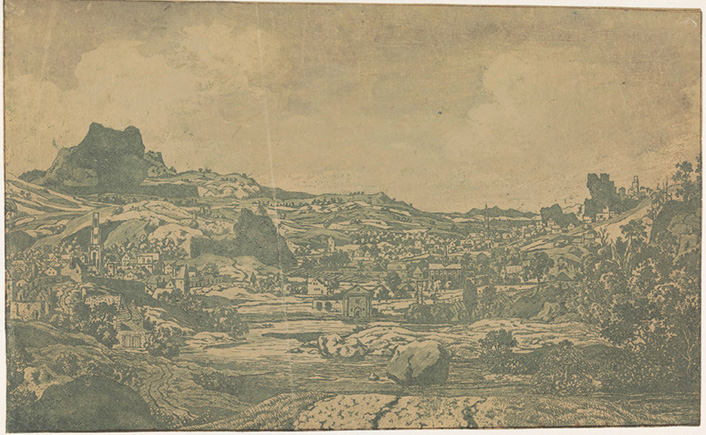
Hercules Segers, Valley With a River and a Town With Four Towers (circa 1626–27). Line etching and drypoint printed in dark green, on a cream tinted ground, pen in gray ink, with gray wash. On loan from the Rijksmuseum, Amsterdam. Courtesy of the Metropolitan Museum of Art.
A version of this exhibition was on view at Amsterdam’s Rijksmuseum through January, alongside a complementary show at the Rembrandthuis, which paired Segers work with later printmakers who were influenced by him. The Rijksmuseum has the world’s largest collection of Segers works, all of which is currently on loan to the Met, including 74 prints, two oil sketches, and one painting.
Where the other artists of his age worked in black ink on white paper, Segers approached the medium as if it were painting, experimenting with many different colored inks at a time when even red or blue would have been highly unusual. In his hands, the same image of a valley can seem to depict a misty morning, a brightly lit afternoon, or a moonlit evening. The effect almost seems to predict the work of Impressionists such as Claude Monet, who returned to the same subjects over and over again to capture the light at different times of the day or year.
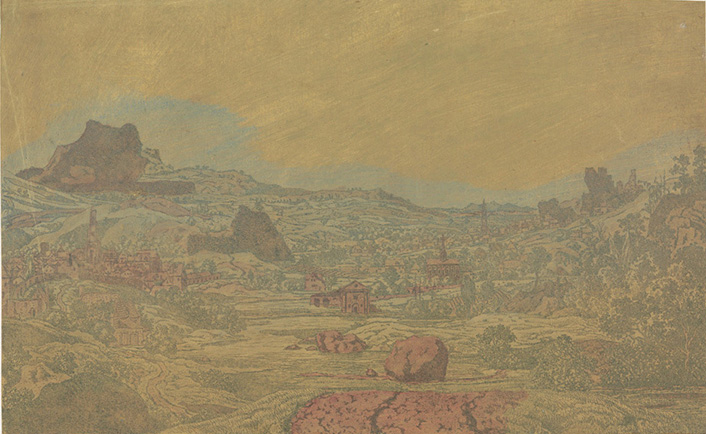
Hercules Segers, Valley With a River and a Town With Four Towers (circa 1626–27). Line etching and drypoint printed in blue, on a gray green ground, colored with brush. On loan from the Rijksmuseum, Amsterdam. Courtesy of the Metropolitan Museum of Art.
Segers also broke ground in his use of different types of paper and fabrics for creating his prints, and was among the first European artists to import paper from Asia. “Segers stretched the medium of printmaking,” said Orenstein.
If the resulting prints look remarkably painterly—the art historian Samuel van Hoogstraten praised Segers in 1678, noting “for he also printed paintings”—that’s also because he developed a remarkable technique that allowed him to paint directly on the printing plate to create his images.
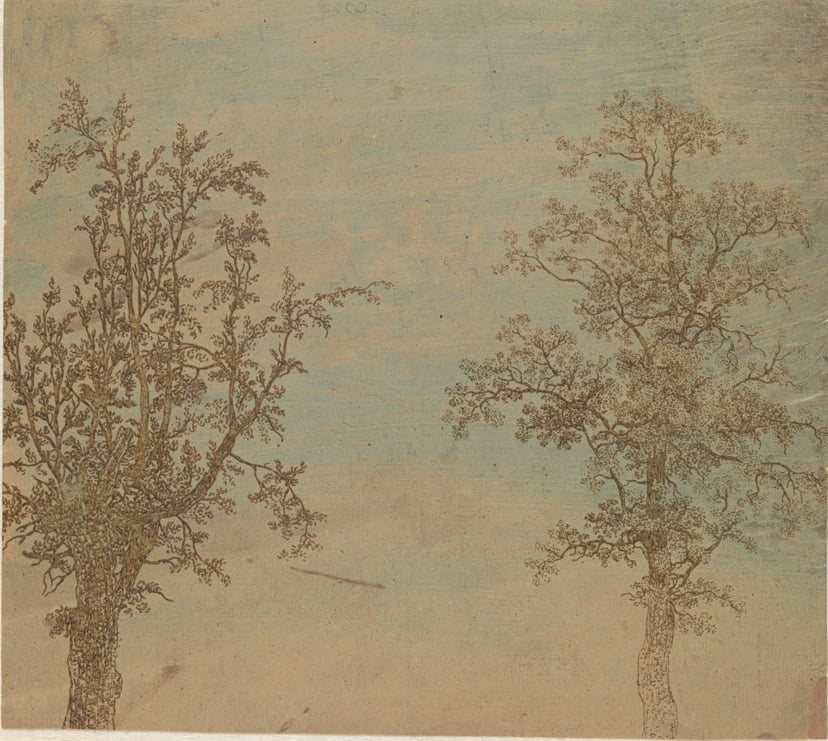
Hercules Segers, The Two Trees (An Alder and an Ash), circa 1625–30. Lift-ground etching printed in green, on a light pink ground, colored with brush; unique impression. On loan from the Rijksmuseum, Amsterdam. Courtesy of the Metropolitan Museum of Art.
Dubbed “lift-ground” or “sugar lift” etching, the method involved painting the desired image with a solution that mixed India ink with cold water and sugar. Segers then coated the entire plate, painting and all, in an acid-resistant wax ground coating.
When submerged in the traditional acid bath, the sugar in the ink swelled up, breaking through the wax and allowing the acid to seep through, “biting” the plate with an engraving of the painted design. From there, Segers would apply ink and print the plate in the normal fashion.

Hercules Segers, Rocky Landscape With a Man Walking to the Right, First Version (circa 1625–30). Line etching and drypoint printed in blue, on a pink ground, colored with brush. On loan from the Rijksmuseum, Amsterdam. Courtesy of the Metropolitan Museum of Art.
This method wasn’t seen again until the 18th century. “Segers doesn’t seem to have had any pupils to have passed on these things,” said Orenstein. “These techniques disappeared.”
Combined with his dramatic use of color and overpainting, Segers’s sugar-lift process led to some spectacular images that feel almost abstract, the nature of their subject difficult to make out upon first glance.
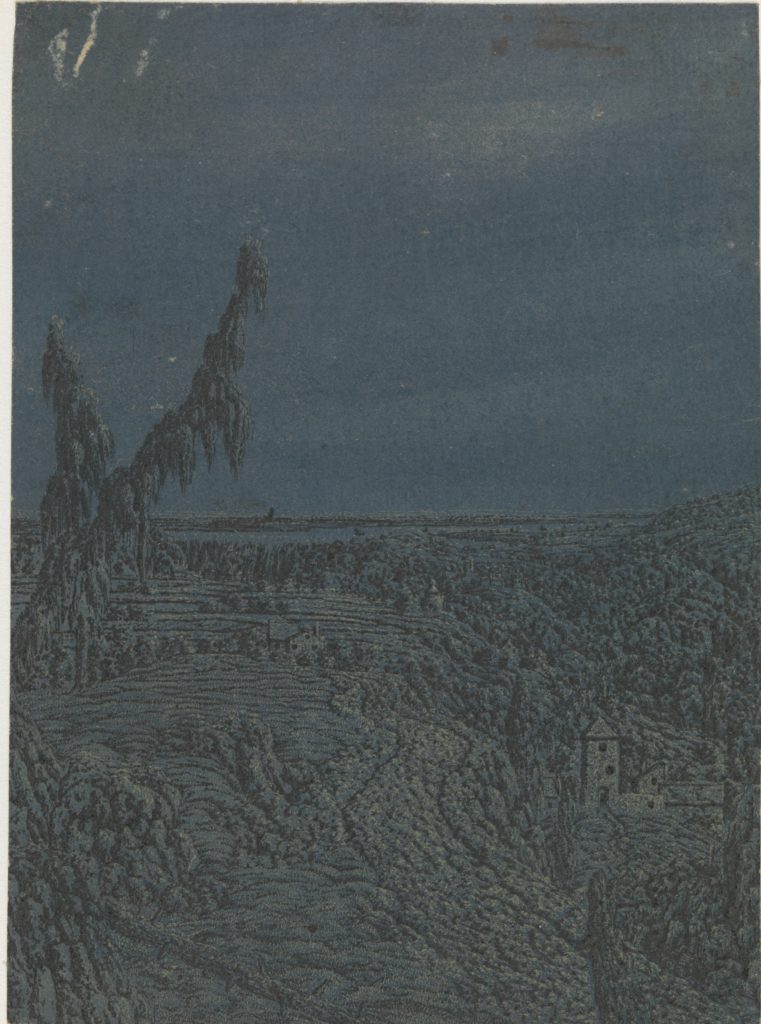
Hercules Segers, Landscape with a Plateau, a River in the Distance (circa 1622–25). Line etching printed in black and pale yellow from two plates, on dark blue prepared paper; unique impression of the second state of three. On loan from the Rijksmuseum, Amsterdam. Courtesy of the Metropolitan Museum of Art.
The show also features what is believed to be the first known example of printing in register, creating the design on two separate plates, and carefully aligning the paper on two separate runs through the printing press, using different colors.
“Just getting that to match up with all of the teeny tiny details is remarkable,” Orenstein pointed out.
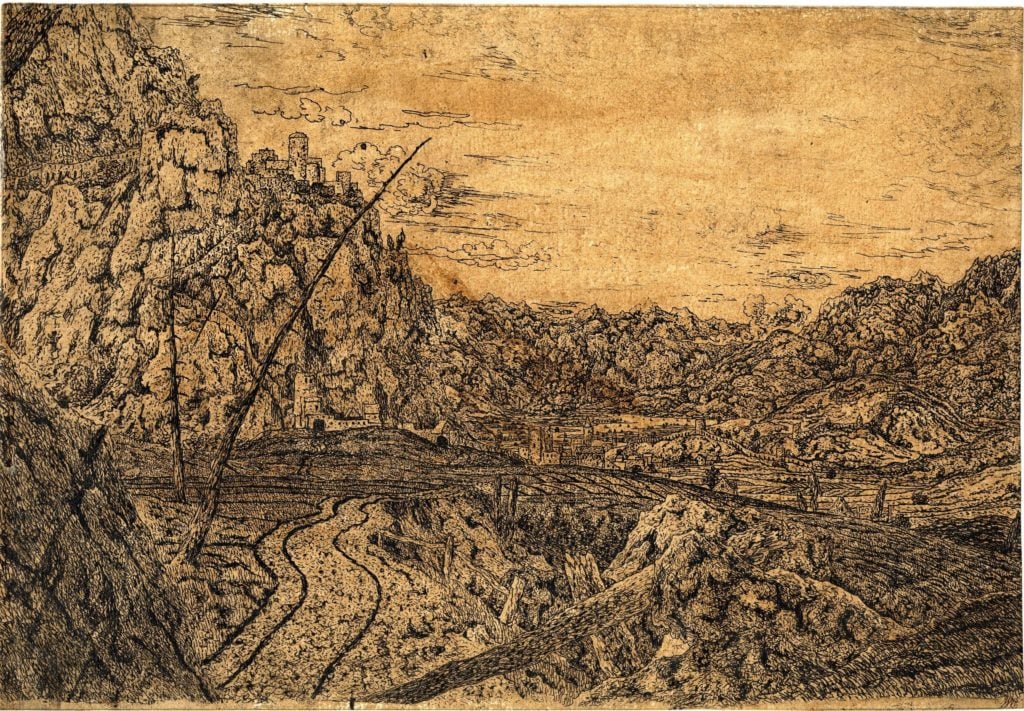
Hercules Segers, Mountain Valley With Dead Pine Trees (circa 1622–25). Line etching printed on light brown ground, varnished; unique impression. On loan from the British Museum, London. Courtesy of the Metropolitan Museum of Art.
Recognizing that a group of works were made from a single printing plate can be extremely difficult. In addition to his wildly disparate use of materials, Segers was also known to crop and refocus his compositions, honing in on new details and omitting others to make a scene feel wildly different.
Today, little is known about Segers, or why he made his prints, which were largely purchased in bulk from his studio after his death. According to the artnet Price Database, the artist’s record at auction is $134,908 for painting. There are no recorded sales for his prints—due to the scarcity of his works, Segers’s artwork is rarely available for purchase.
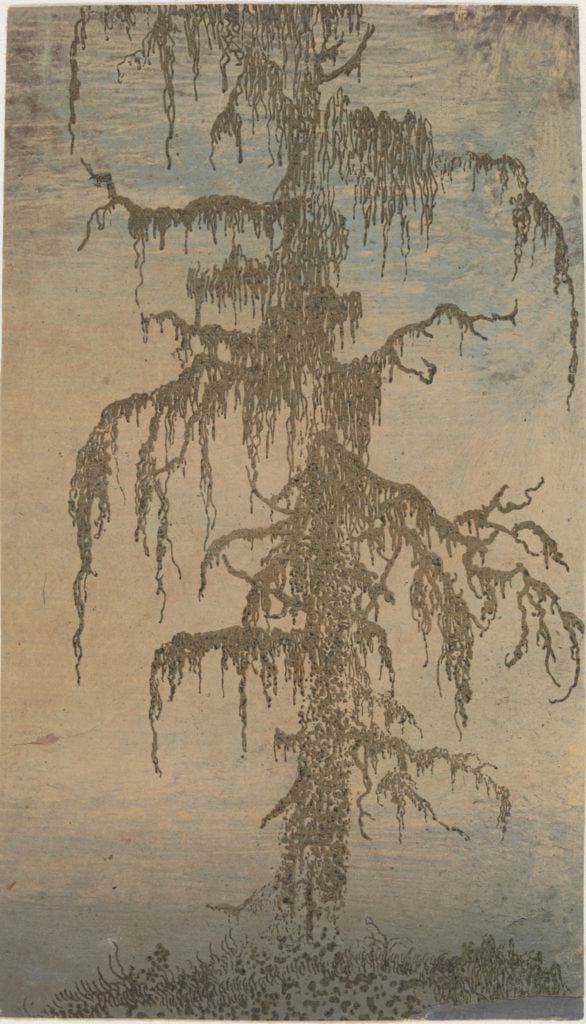
Hercules Segers, The Mossy Tree(circa 1625–30). Lift-ground etching printed in green, on a light pink ground, colored with brush; unique impression. On loan from the Rijksmuseum, Amsterdam. Courtesy of the Metropolitan Museum of Art.
In his biography of the artist, van Hoogstraten offers sordid details about the artist dying after drunkenly falling down the stairs, but that story is unverifiable. Although the life and work of this mysterious artist may never be fully illuminated, the Met offers a fascinating entry-point into the career of a man whose creative genius undoubtedly deserves more widespread recognition.
See more prints from the exhibition below:
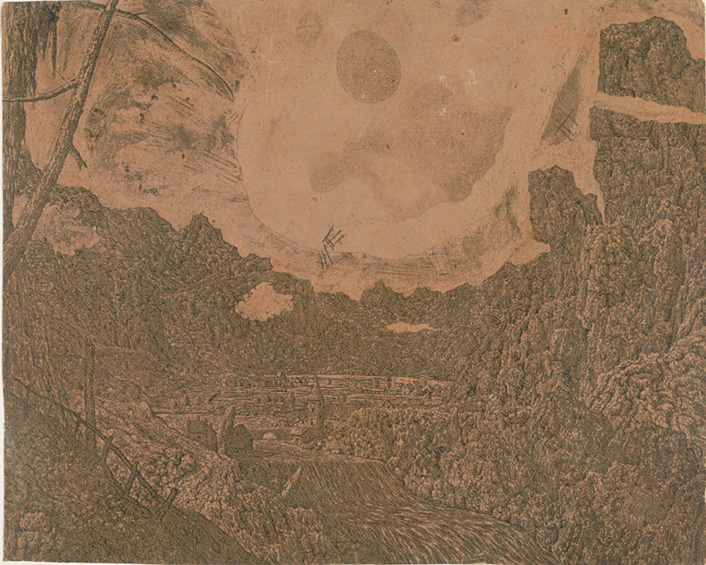
Hercules Segers, Landscape With a Waterfall, Second Version (circa 1625–27). Line etching with tone and highlights on a dark pink ground, varnished; first state of four. On loan from the Rijksmuseum, Amsterdam. Courtesy of the Metropolitan Museum of Art.
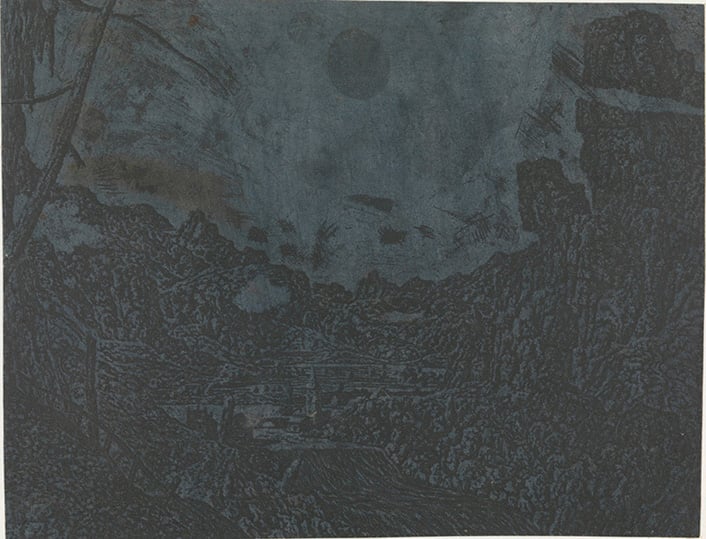
Hercules Segers, Landscape With a Waterfall, Second Version (circa 1625–27). Line etching printed with tone and highlights, colored with brush; second state of four. On loan from the Rijksmuseum, Amsterdam. Courtesy of the Metropolitan Museum of Art.
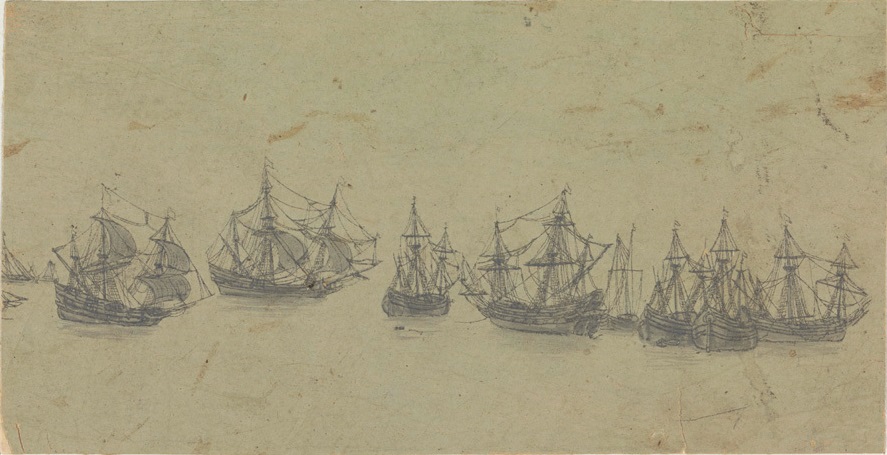
Hercules Segers, Frieze With Shopes in a Roadstead (circa 1618–22). Line etching printed in dark gray, on a blue-gray ground, with gray. On loan from the Rijksmuseum, Amsterdam. Courtesy of the Metropolitan Museum of Art.
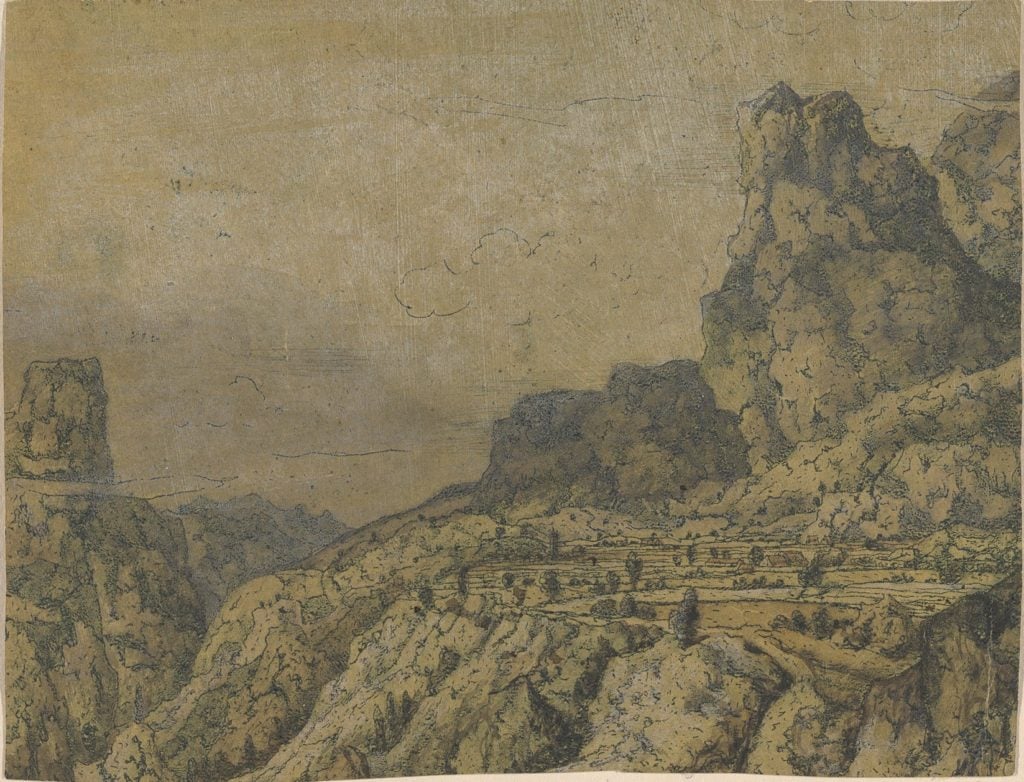
Hercules Segers, Plateau in Rocky Mountains (circa 1625–30). Line etching, drypoint, and metal punch printed in blue-green, on a yellow-green ground, colored with brush; second state of two. Courtesy of the Metropolitan Museum of Art.
“The Mysterious Landscapes of Hercules Segers” is on view at the Metropolitan Museum of Art, Met Fifth Avenue, 1000 Fifth Avenue, February 13–May 21, 2017.